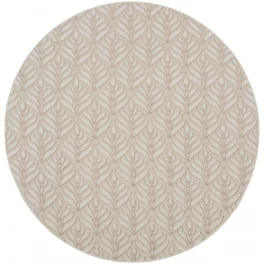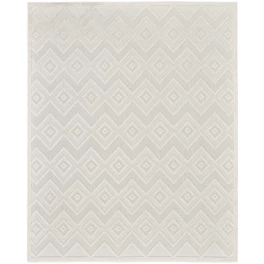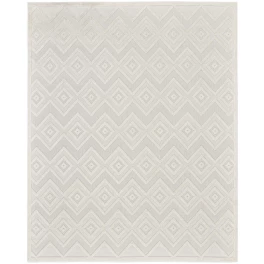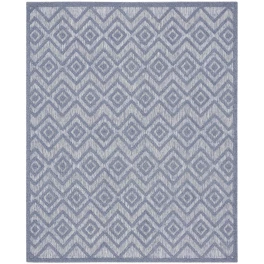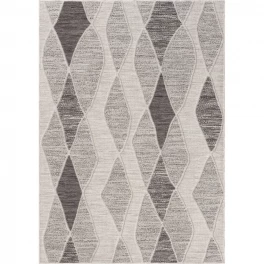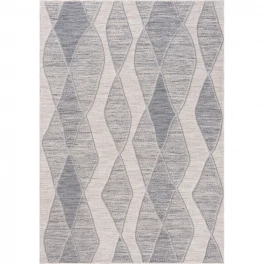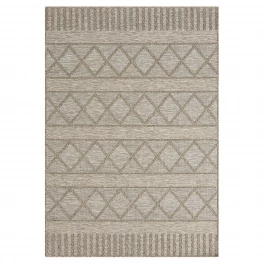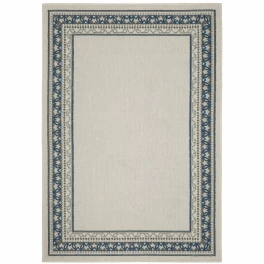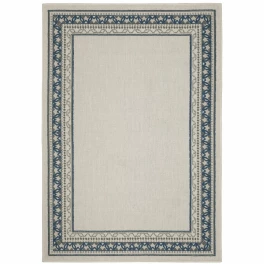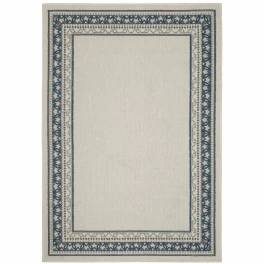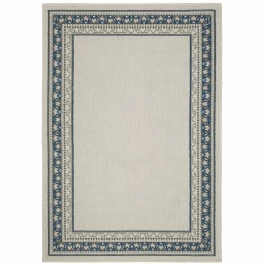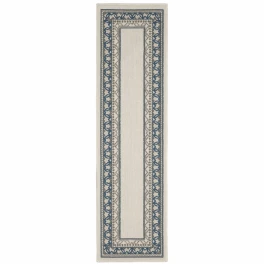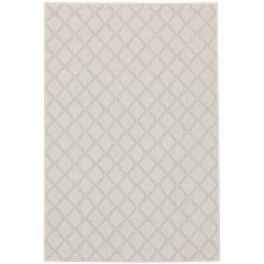Finding a rug that not only appeals to you, but also physically fits and stylistically fits your home can sometimes be a challenge. Beyond looks, it's important to also know where the rug will go in your home and if it's a material suited to take the wear and tear that our floors handle on a daily basis. It would be a shame for your brand new carpet to end up looking old and worn just months after it's brought into your house; we're here to help you avoid this problem.
There are multiple places in the home that could be considered high traffic or tread most frequently. These areas might be: leading from the front door, a main hallway, stairwells, a path to the kitchen, kids rooms, etc. What's key is finding a suitable rug that not only looks good, but will wear appropriately over time and not look old and tattered.

Photo by Artazum on Shutterstock
Common Rug Materials for High Traffic Areas
The main 3 types of materials that are going to be the best in this scenario are wool, nylon, and polyester. Let's take a closer look at each of these options.

Photo by Jodie Johnson on Shutterstock
We'll look at wool first, but to get a better understanding of the similarities and differences between wool and synthetic rugs, here’s a quick rug materials comparison.
Wool
If you want a natural material for your floors, then wool is the winner. There are many reasons its such a popular choice, durability just being one of them. Wool is one of the softest rug materials and has been keeping toes warm on cold winter nights for centuries. This warmth also translates to insulating your space, limiting the transfer of heat into the home. Not only does wool retain warmth very well, it's also great at repelling stains, including oil. While sometimes proving fatal for other materials, wool can resist oils that are commonly tracked inside from garages, asphalt, or even from cooking agents that go airborne due to heat or from aerosol spray bottles.

Photo by Jodie Johnson on Shutterstock
Since these types of rugs allow for dirt and debris to be easily cleaned from them and keep their shape for a long time, they make a great addition to the home in high traffic areas. However, there are a few downsides to be aware before selecting wool for your home.
Due to wool's highly absorbent nature, it has an interesting relationship with moisture. When in a humid environment, a wool carpet will absorb excess moisture that's in the air. When in a dryer environment, the wool fibers release the moisture, keeping your home's moisture levels in balance. Where this can get messy is if wool rugs are kept in an area that is often damp, like basements or bathrooms. If not given the opportunity to dry out, the rug will retain the moisture and be more prone to mildew and mold. Since wool carpets retain so much moisture, they are naturally resistant to fire. Wool won't burn, but it will char. If a lit cigarette was dropped on a wool carpet, it would probably leave a mark but it would not light the rug on fire; a big difference between wool and synthetic carpets.
Also worth noting is that because of the absorbency of wool, stains from spills may be very hard to remove. Wool isn't as stain resistant as synthetic fibers, so unless stains are treated immediately, there's a chance that the stain will be very hard to remove if given the time to sink in and be absorbed by the carpet. Take caution if you have a pet prone to accidents; wool can absorb the smell and moisture, making it very hard to clean.
Wool Rugs
- May require professional cleaning occasionally
- Prone to shedding
- Should not be placed under direct sunlight due to tendency to fade
- More of an investment with their heavy price tag, but can last decades if maintained properly
Synthetic
To most folks, it can be tricky to parse through synthetic carpet offerings and identify what's what. Truth be told, on the surface they are all very similar- most synthetic carpets are a blend of polypropylene, nylon, and polyester. When we refer to a nylon rug, for example, we're referencing a rug that is potentially a blend but primarily nylon in fiber. There are a few key difference across them that make certain material types better suited to your home. The two main synthetic types we'll explore are nylon and polyester.

Photo by Andrey_Popov on Shutterstock
While both types of fiber are roughly on the same playing field in terms of softness, there are several key difference between the 2 synthetic types. Nylon is the most resilient of synthetic carpets in terms of protecting against foot traffic- it's the most popular fiber type in the residential carpet industry. It is resistant to abrasion, dents/crushing from furniture, and highly resistant to stains, making it a good choice for many homes and workplaces, too. Nylon carpets keep their shape, but heavily traveled rugs require steam cleaning at least twice a year to ensure longevity. These carpets are also available in a ton of different colors due to its receptibility to dyes.
All modern synthetic or synthetic blend rugs have some sort of stain protection in them, however nylon is very absorbent and will soak up spills. Like wool, if cleaned quickly, a stain can be avoided. Just hope that the stain protection coat does it's job protecting your floors from spots. If you're very worried about staining, polyester is the better choice as it repels liquid.
Polyester is a less durable fiber than nylon but has far greater resistance to stains. With less resistance against wear, polyester rugs show signs of aging in less time than nylon does. However, if budget is paramount, polyester rugs are a much, much cheaper option if you're looking to cover a large area of the home.
Nylon Fiber Rugs
- Strongest resistance against foot traffic
- Most color options
- Most expensive synthetic option
Polyester Fiber Rugs
- Strongest resistance against stains
- Considered the softer of the two (but technology slowly is closing the gap)
- Drastically cheaper in price compared to nylon
Carpet Maintenance and Care
If you invest in an awesome high traffic area rug or carpet, you'll want to maintain it. Regular care is key to extending the life and look of your flooring.

Photo by Andrey_Popov on Shutterstock
To keep your carpet or rugs in great shape, follow these tips:
- Vacuum regularly to remove debris and dirt accumulation
- Use anti-slip mats to ensure your carpet doesn't shift around or get pulled when walked on
- If your area rug isn’t held down by furniture, use a carpet pad and/or an anti-roll corner cap
- For standard carpets, ask the manufacturer about their preferred carpet pad for high-traffic areas. In some instances, thicker pads with higher densities might not be the best option
- Don't let stains settle in! Clean up spills or dirt immediately after you notice them. To combat a particularly stubborn stain, put baking soda directly on the stain and then add a healthy splash of white vinegar to it. Allow this mixture to sit for 5 minutes, then scrub, rinse the area with water, and allow it to dry.
- At least twice a year, properly shampoo your carpets using a professional service or by renting a handheld carpet cleaner.
Whether you're looking for a natural fiber rug or synthetic, these are your 3 strongest options. Once you've made your selection, be sure to clean and care for your carpet often to keep it feeling soft, springy, and new.




